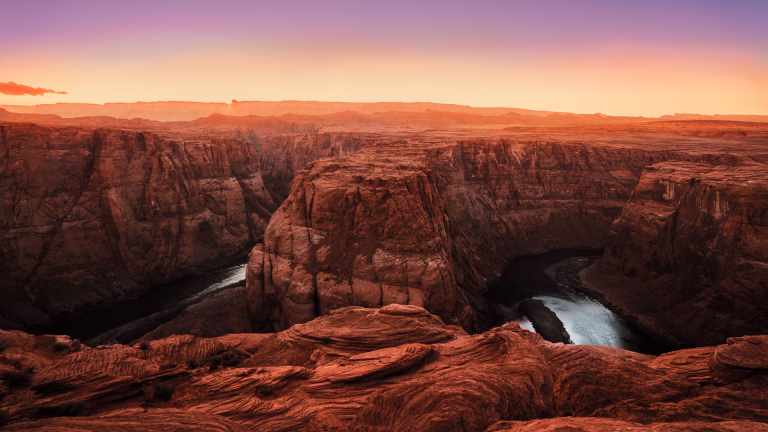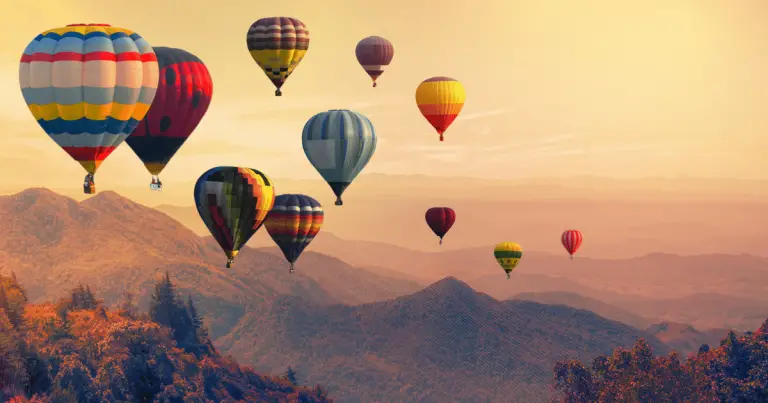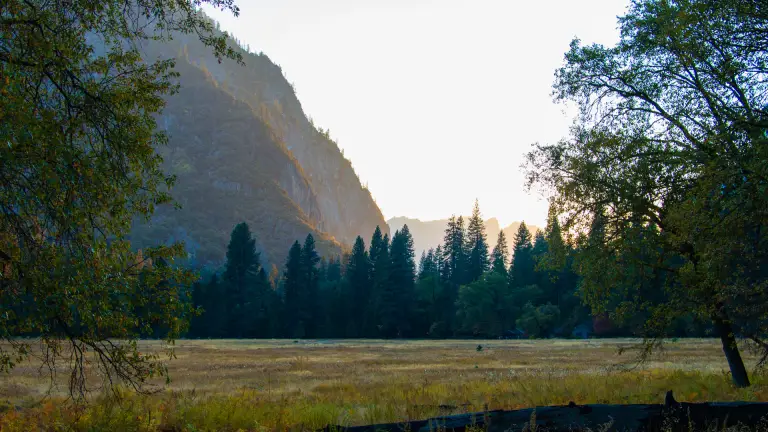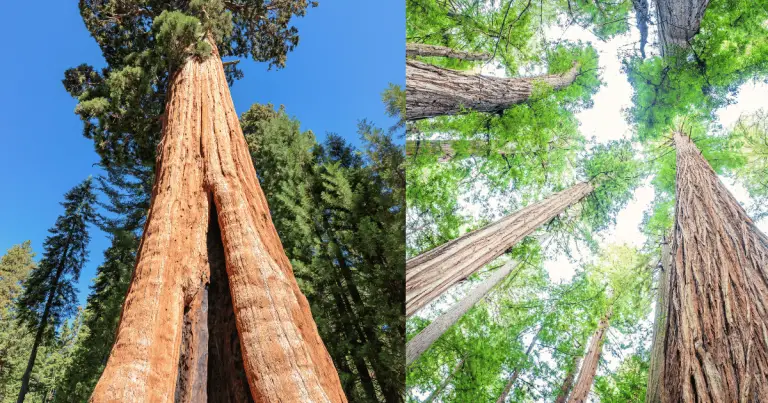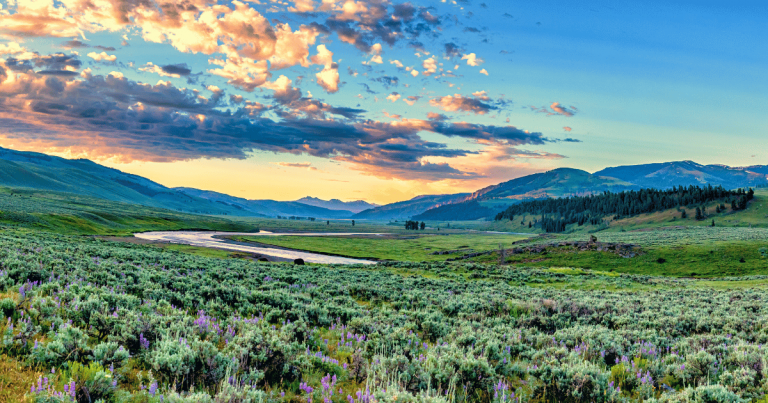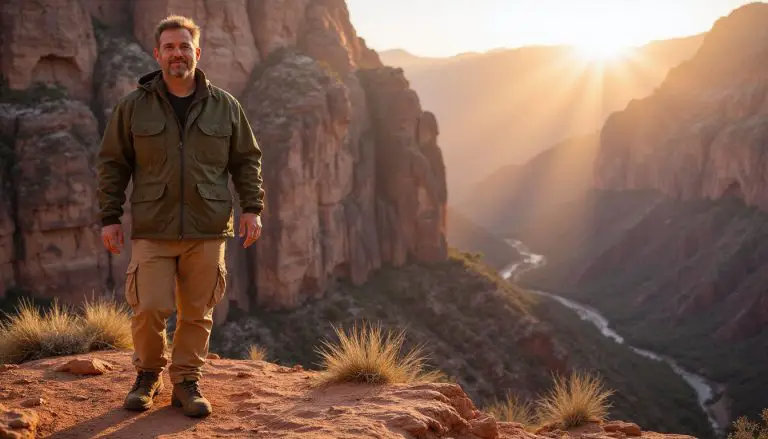wildlife spotting tips in Rocky Mountain National Park
Many visitors struggle to spot animals during their trips to Rocky Mountain National Park. The park is home to elk, bighorn sheep, moose, and more wildlife that roam its diverse ecosystems.
This blog post shares clear wildlife spotting tips in Rocky Mountain National Park to help you see these amazing creatures safely. Start your outdoor exploration now.
Key Takeaways
- Visit early morning or late evening for the best wildlife sightings. Elk, moose, and bighorn sheep are most active at these times.
- Go to meadows (like Sheep Lakes), open areas (such as Horseshoe Park), streams, lakes, and Kawuneeche Valley. These locations have high rates of animal activity.
- Always keep a safe distance—at least 75 feet from elk or deer, and 300 feet from bears or mountain lions. Use binoculars or a zoom lens to observe safely.
- Spring and fall offer unique chances to see animals with fewer crowds. You may notice elk grazing in meadows and colorful scenery during these seasons.
- Never approach or feed wildlife. Stay on marked trails to protect sensitive habitats and support healthy animal behavior.
Best Times and Locations for Wildlife Spotting
Wildlife is most active during early morning and late evening. Visit meadows, streams, and specific trails to catch a glimpse of elk, moose, or bighorn sheep.
Early morning and late evening
Early morning and late evening offer the best chances for wildlife spotting in Rocky Mountain National Park. During these times, animals such as elk, moose, and bighorn sheep become more active.
You can see them grazing in meadows or near streams. The soft light during dawn and dusk also provides great conditions for photography.
Keep binoculars handy to spot animal behavior from a safe distance. Observing wildlife at these times enhances your nature observation experience. Enjoy exploring various habitats during early hours or in the evening light; you might even catch a glimpse of mountain lions on the prowl.
Dawn and dusk reveal nature’s hidden wonders.
Next, let’s discuss the best locations for viewing wildlife effectively.
Meadows and open areas (like Sheep Lakes and Horseshoe Park)
Meadows and open areas in Rocky Mountain National Park offer great chances for wildlife viewing. Tourists often spot elk, bighorn sheep, and moose in these spaces.
- Visit Sheep Lakes to observe animals grazing during dawn and dusk. Elk frequently roam this area, especially in the early hours.
- Explore Horseshoe Park for its scenic vistas. This location provides excellent opportunities to catch mountain lions basking in the sun.
- Open fields attract a variety of wildlife. Animals like deer can be seen here, enjoying the rich grasslands.
- Bring binoculars for better observation; using zoom lenses enhances your photography chances significantly.
- Avoid disturbing wildlife by maintaining a safe distance. Respect their space to ensure both safety and comfort for you and the animals.
- Watch animal behavior closely while you observe; changes may indicate nearby threats or disturbances.
- Be mindful of ecosystem diversity as different species rely on meadows for food and shelter. Each habitat plays a crucial role in sustaining park wildlife.
The next section will cover responsible wildlife viewing practices.
Streams and lakes
Streams and lakes attract various wildlife in Rocky Mountain National Park. These water sources serve as vital habitats for animals.
- Look for moose in the wetlands around streams. They enjoy wading through shallow water while grazing on aquatic plants.
- Observe elk near lakes during dawn and dusk. They often come to drink water or feed on nearby grass.
- Bighorn sheep frequently visit water locations for hydration. Watch them scale rocky cliffs near flowing streams.
- Scan the shores of lakes for signs of mountain lions. They might appear at odd hours, especially if prey approaches the water.
- Use binoculars to spot birds by the water’s edge. Unique species like herons and cormorants thrive around these ecosystems.
- Avoid disturbing areas with sensitive wildlife. Staying back helps maintain animal behavior and natural routines.
- Keep your distance from any animal you encounter. An appropriate space ensures both safety and conservation of their habitats.
- Visit Kawuneeche Valley’s lakes for stunning views. The area is known for diverse wildlife sightings amid beautiful scenery.
- Take time to photograph wildlife by streams using a zoom lens. Capturing these moments adds excitement to your outdoor exploration experience.
Enjoying streams and lakes provides great opportunities for wildlife photography while respecting their habitats.
Kawuneeche Valley
Kawuneeche Valley offers stunning views and vibrant wildlife. This area is famous for its diverse ecosystem, drawing animals like elk and moose. Early morning or late evening proves best for wildlife spotting, as many species are active during these times.
The valley provides prime grazing spots in open fields and near streams.
Hikers can explore various trails to increase their chances of sightings. Birdwatching opportunities abound as well, making Kawuneeche a popular destination for nature enthusiasts and photographers alike.
Wildlife photography becomes easier with careful observation of animal behavior from a safe distance. Following park regulations ensures both your safety and the preservation of habitats around you.
Scenic vistas reward those who venture into this beautiful part of Rocky Mountain National Park while offering wonderful moments in outdoor exploration. Next, let’s discuss specific trails that enhance your wildlife viewing experience.
Trail Ridge Road
Kawuneeche Valley leads to another fantastic wildlife viewing area, Trail Ridge Road. This iconic route spans about 48 miles and reaches elevations over 12,000 feet. Visitors can enjoy breathtaking scenic vistas along the way.
Keep an eye out for elk, bighorn sheep, and moose as you drive.
The best time for wildlife spotting on Trail Ridge Road is during dawn and dusk when animals are most active. Use binoculars or a camera with zoom lens to capture stunning photographs of meadow grazing.
Stay alert to animal behavior while driving through this beautiful landscape. Each season offers unique opportunities for nature observation in this diverse ecosystem.
Specific trails (such as North Inlet Trail or Colorado River Trail)
Specific trails in Rocky Mountain National Park offer great opportunities for wildlife spotting. These trails lead you through unique habitats and breathtaking views.
- North Inlet Trail winds through lush forests and meadows. Hikers often see elk grazing here, especially at dawn and dusk. The trail offers stunning vistas of the surrounding mountains.
- Colorado River Trail follows the river’s edge. This area attracts moose, who often feed in the wetland areas nearby. Keep your eyes peeled for bighorn sheep on the rocky outcrops above.
- Kasparov Valley leads to diverse ecosystems filled with various wildlife. Photographers enjoy capturing images of mountain lions resting on cliffs or deer roaming below.
- The Timberline Falls Trail provides access to beautiful waterfalls. Hikers might spot different bird species along this path, enhancing their nature observation experience.
- Fall River Road connects scenic viewpoints that highlight the park’s ecosystem diversity. Many visitors report sightings of bears foraging for food during late summer and early fall.
Choosing these specific trails enhances your wildlife viewing adventure, making it a memorable outdoor exploration experience in the park.
Responsible Wildlife Viewing
Respect wildlife by keeping a safe distance. Use binoculars or a zoom lens to observe animals without intruding on their space.
Maintain safe distances
Wildlife viewing requires maintaining safe distances. Approach animals with caution. Elk, moose, and bighorn sheep roam freely in Rocky Mountain National Park. Stay at least 75 feet away from elk and deer.
For bears and mountain lions, increase that distance to 300 feet or more. Use binoculars or a zoom lens for better views without disturbing them.
Animals can react unpredictably if you get too close. Move back if an animal shows signs of stress, such as raising its head or moving toward you. Do not feed wildlife; it harms their natural behavior and health.
Respecting these guidelines helps preserve habitats and ensures enjoyable wildlife photography opportunities in the park’s diverse ecosystems.
Use binoculars or zoom lens
Using binoculars or a zoom lens can greatly enhance your wildlife viewing experience in Rocky Mountain National Park. These tools allow you to observe animals like elk and moose from a safe distance.
A good pair of binoculars helps you spot creatures that might be hiding in the bushes or grazing in meadows. Meanwhile, a camera with a zoom lens captures stunning photographs of wildlife without disturbing their natural behavior.
Choose high-quality optics for the best results. Look for lenses that provide clear images and wide fields of view. This equipment makes it easier to appreciate animal interactions, especially during dawn and dusk when many animals are most active.
With these tips, get ready for responsible wildlife viewing next!
Be prepared to move away if animal reacts
Wildlife can act unpredictably. If an animal shows signs of stress, you must be ready to move away. Elk or moose may react if you get too close. Animals like mountain lions often prefer to retreat rather than confront people.
Recognizing their behavior is key to safe wildlife viewing.
When an animal feels threatened, it can become defensive. Keep your distance from the habitat and avoid approaching them. Use binoculars or a zoom lens for clear views without disturbing the animals.
Observing nature responsibly helps preserve these ecosystems and allows everyone to enjoy wildlife spotting safely in Rocky Mountain National Park. Respecting wildlife means ensuring future generations have similar opportunities to explore this beautiful park.
Do not approach or feed wildlife
Tourists must keep a safe distance from wildlife in Rocky Mountain National Park. Approaching or feeding animals can harm both them and visitors. Elk, moose, and bighorn sheep often roam meadows during early morning and late evening.
Feeding these animals disrupts their natural behavior and leads to dangerous interactions.
Using binoculars or a zoom lens allows for great wildlife photography without disturbing the animals. Always prioritize safety by observing from afar; this ensures everyone enjoys nature while preserving it.
Respecting the habitats of mountain lions or other wildlife helps maintain ecosystem diversity in the park.
Respect habitats and sensitive areas
Wildlife thrives in Rocky Mountain National Park’s diverse ecosystems. Protecting these habitats ensures animals like elk, bighorn sheep, and moose can flourish. Keep a safe distance from wildlife to avoid disturbing their natural behavior.
Use binoculars or a zoom lens for close views instead of approaching the animals.
Stay on marked trails to prevent habitat damage. Foot traffic can harm sensitive areas essential for wildlife survival. Observing meadow grazing or mountain lions from afar enhances your experience while respecting their environment.
Prioritizing habitat preservation fosters conservation efforts that benefit all visitors and species alike.
Other Tips for Wildlife Spotting
Bring your binoculars or camera with a zoom lens to enhance your viewing experience. Visiting during spring or fall opens doors to unique wildlife encounters and vibrant colors.
Bring binoculars or camera with zoom
Wildlife spotting in Rocky Mountain National Park becomes more rewarding with binoculars or a camera that has a zoom lens. These tools help you observe animals from a safe distance.
Elk, moose, and bighorn sheep often graze in meadows during dawn and dusk. Binoculars allow you to catch details without disturbing their natural behavior.
A camera with a zoom lens lets you capture stunning wildlife photographs while keeping the animals at ease. You can focus on the vibrant colors of the surrounding ecosystem as well.
Enjoying nature’s beauty enhances your outdoor exploration experience, so having these essentials is crucial for successful wildlife viewing.
Consider visiting during spring or fall for unique viewing opportunities
Spring and fall offer some of the best chances for wildlife spotting in Rocky Mountain National Park. During these seasons, animals become more active. Elk and moose often graze in meadows, making them easier to see.
Bighorn sheep climb rocky slopes while looking for food.
These months also provide stunning scenery. Colorful wildflowers bloom in spring, drawing both animals and photographers. In fall, vibrant foliage paints the landscape with rich hues.
Early morning or late evening light creates perfect conditions for capturing wildlife photographs. This time of year showcases the park’s ecosystem diversity at its finest.
Explore various habitats
Rocky Mountain National Park boasts diverse habitats that support a wide range of wildlife. Hike through meadows, forests, and wetlands to discover different animal species. Moose often wander near streams and lakes, while elk graze in open areas during dawn and dusk.
Bighorn sheep thrive on rocky slopes; you can spot them ascending cliffs or resting in sunny patches.
Each habitat provides unique viewing opportunities. Kawuneeche Valley offers chances to see mountain lions lurking among dense vegetation. Trail Ridge Road reveals stunning vistas where you might catch sight of various animals.
Explore trails like North Inlet Trail for more surprises along the way. Using binoculars enhances your wildlife photography experience as you observe these magnificent creatures from a safe distance.
Use scenic routes
Scenic routes offer stunning views and chances for wildlife observation. Drive along Trail Ridge Road for breathtaking vistas above the treeline, where you might spot bighorn sheep or elk grazing in the meadows.
The road provides access to various habitats that attract diverse animals.
Explore Kawuneeche Valley, a great area to see moose near lakes and streams. These scenic drives not only enhance your journey but also improve your wildlife photography opportunities.
Avoid rushing through these areas; take time to stop and observe animal behavior at dawn or dusk for the best viewing experience.
Conclusion
Wildlife spotting in Rocky Mountain National Park offers thrilling adventures. Early mornings and late evenings bring the best opportunities to see animals like elk, moose, and bighorn sheep.
Always keep a safe distance from wildlife. Use binoculars or your camera to capture stunning moments without disturbing them. Enjoy the journey of nature observation while respecting their habitats.
FAQs
1. What is the best time for wildlife viewing in Rocky Mountain National Park?
Dawn and dusk offer the highest chances to spot elk, bighorn sheep, or moose. Animals are more active during these times, especially in meadows and along hiking trails.
2. How can I practice safe wildlife observation while exploring nature?
Always keep a safe distance from animals like mountain lions or moose. Use binoculars for close views and never approach grazing herds or resting creatures.
3. Which areas provide top opportunities for animal tracking and photography?
Scenic vistas near rivers, open meadows, and forest edges attract diverse species. These spots also give good backgrounds for wildlife photography.
4. Why is habitat preservation important when spotting animals on hiking routes?
Respecting ecosystem diversity helps protect habitats that support elk, bighorn sheep, and other native species; this ensures sustainable tourism benefits both visitors and wildlife.
5. What tips improve outdoor exploration without disturbing animal behavior?
Move quietly on marked hiking trails; observe signs of animal activity but avoid following them off-trail. Follow all conservation efforts to help maintain healthy populations for future nature observation trips.

